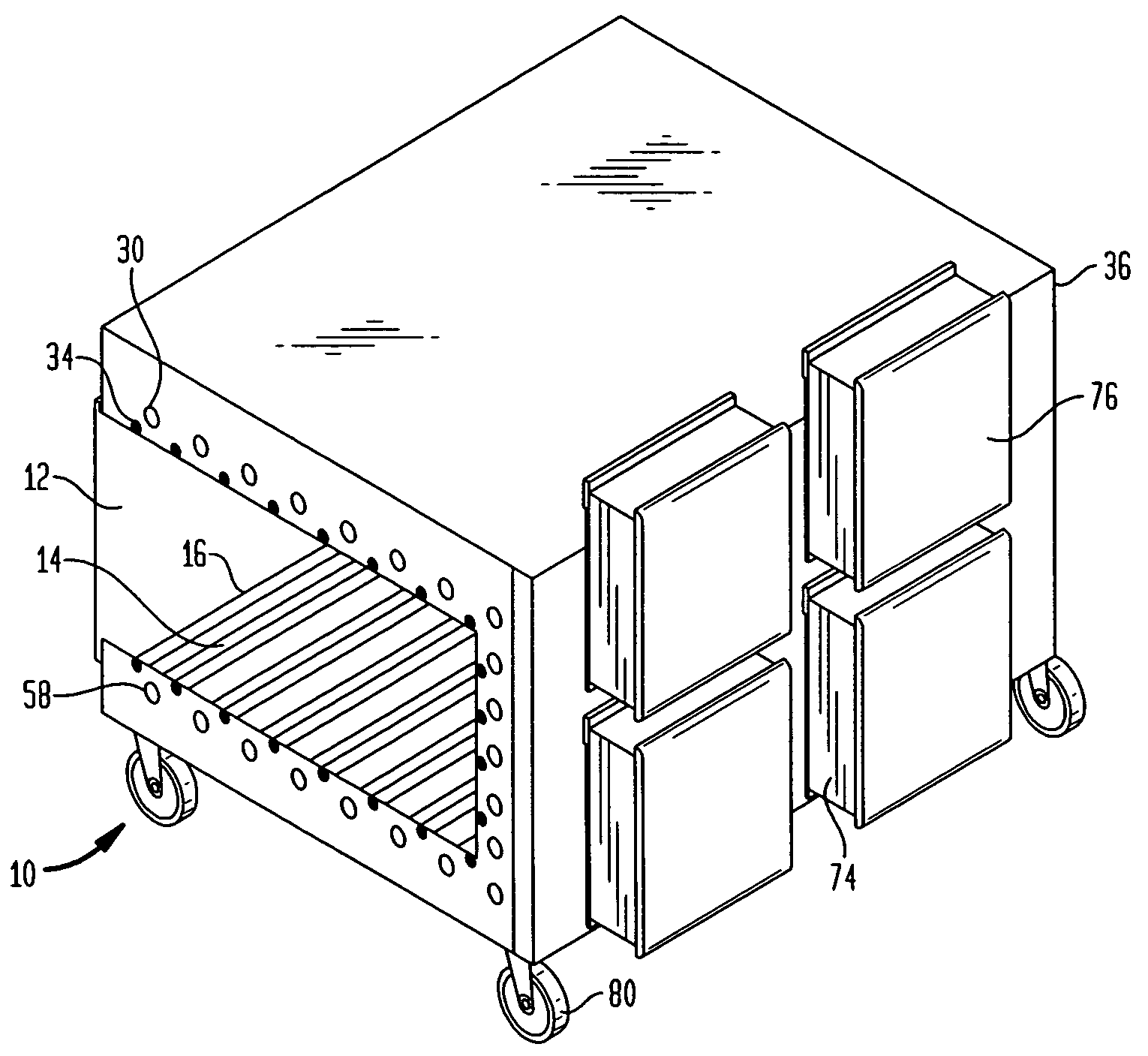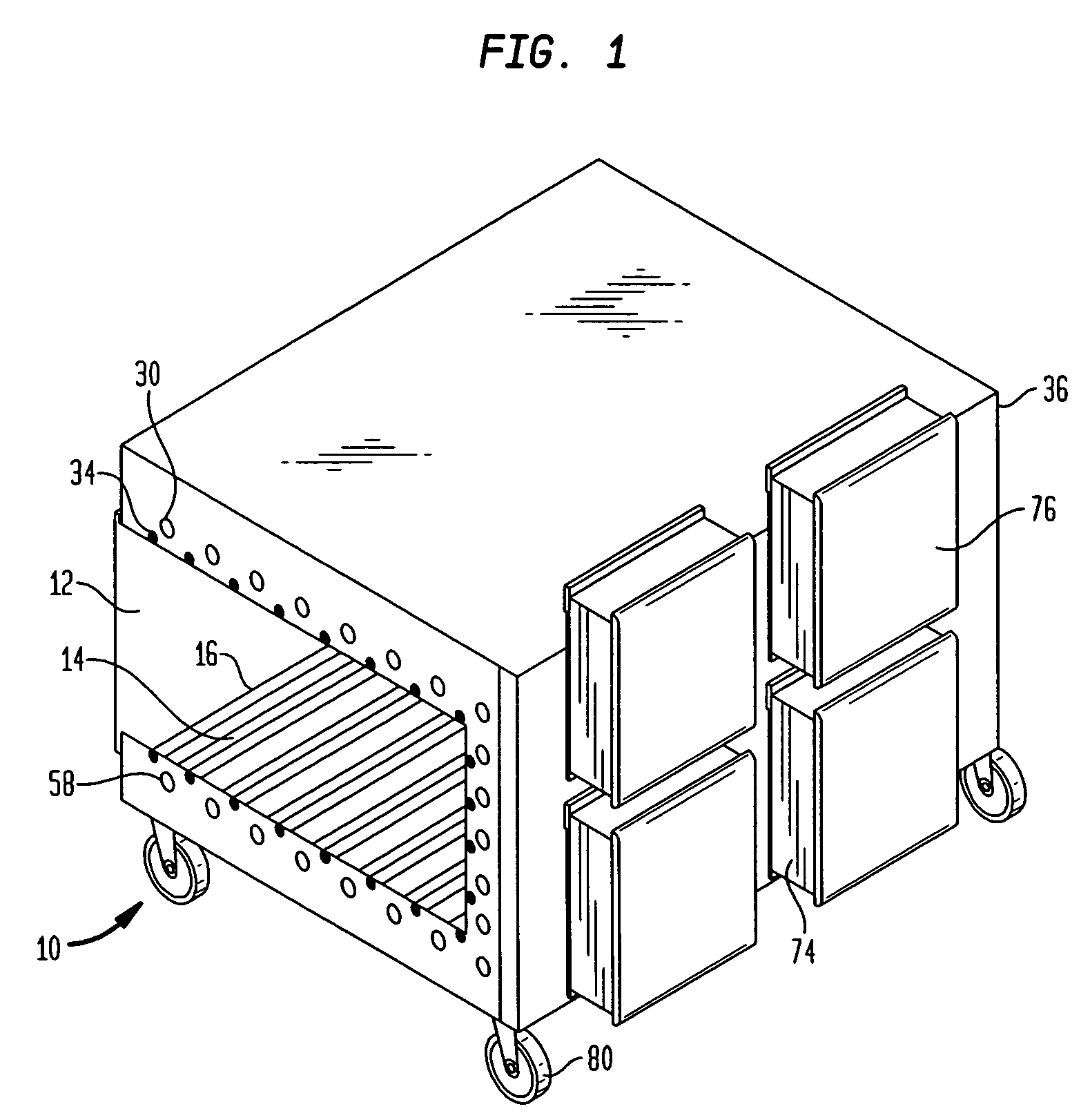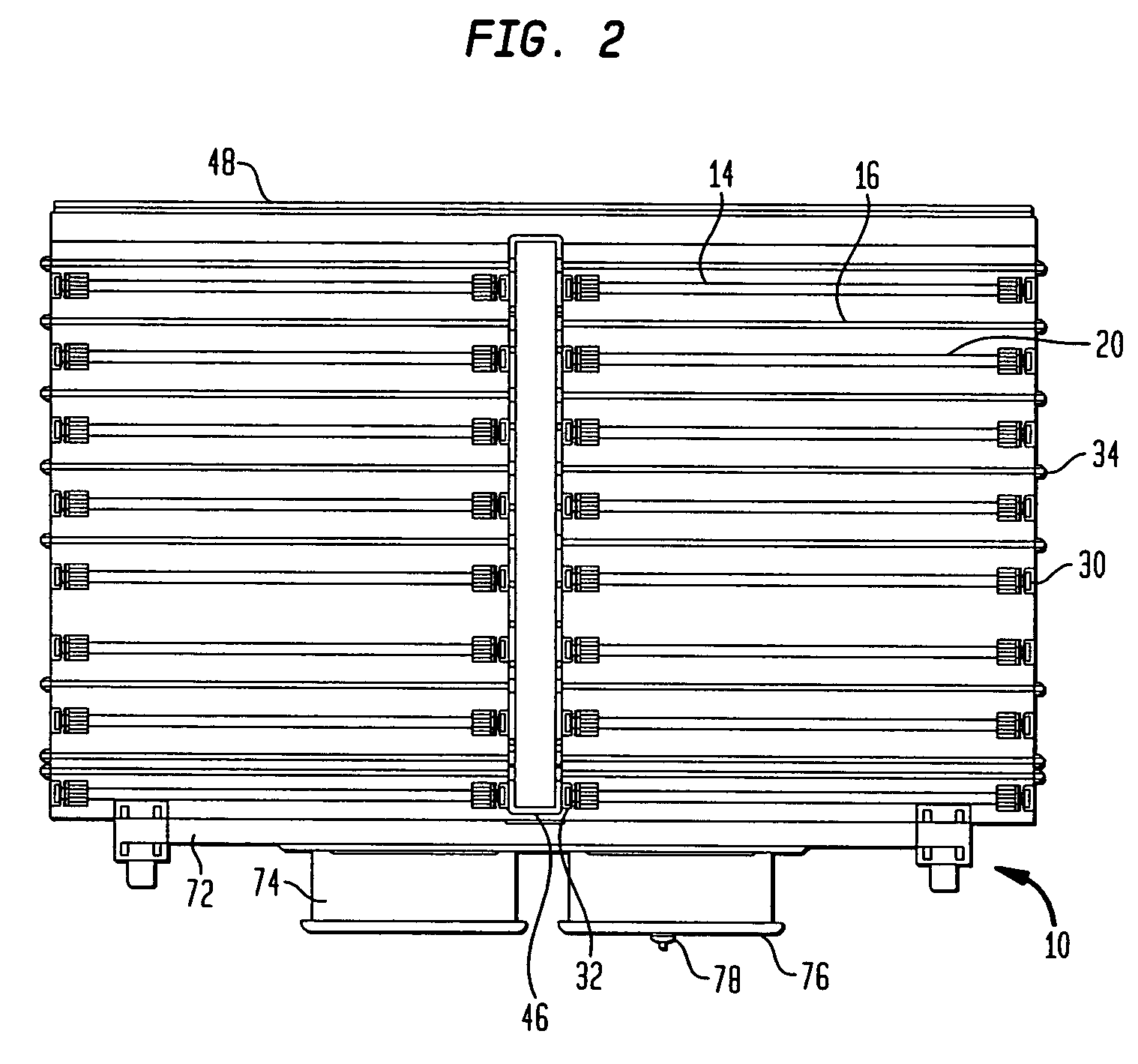Food surface sanitation tunnel
a technology for sanitation tunnels and food surfaces, applied in the direction of egg preservation by heating, packaging goods, transportation and packaging, etc., can solve the problems of increasing competition between processors, increasing the number of people made ill each year, and reducing the application cost, so as to improve the efficiency of the formation of sanitizing plasma, and facilitate the effect of assembling, cleaning, maintaining and disassembling
- Summary
- Abstract
- Description
- Claims
- Application Information
AI Technical Summary
Benefits of technology
Problems solved by technology
Method used
Image
Examples
Embodiment Construction
[0057]The present invention is a modular, adjustable, portable, easy to maintain food sanitation tunnel system, shown generally in FIGS. 1–4 at 10. The system includes an enclosing means of a predetermined geometry, such as a c-shaped tunnel 12 for simultaneously subjecting food on at least two sides to sanitizers including UV light, ozone, and a sanitizing plasma including hydroperoxides, superoxides and hydroxyl radicals. Attached to the inside surface of the tunnel 12 are one or more sanitizing radiation sources, such as UV light sources 14, and one or more target rods 16 that are located within the tunnel 12 in optical proximity to the UV light sources 14.
[0058]Preferably the tunnel 12 is made from a rigid, food safe material, such as stainless steel. The tunnel 12 is placed around the food to be sanitized, so that sanitizers touch the food on at least two sides. It is preferred that the food is passed through the tunnel 12 along a conveyor. Where sanitization of the food comes ...
PUM
| Property | Measurement | Unit |
|---|---|---|
| Fraction | aaaaa | aaaaa |
| Nanoscale particle size | aaaaa | aaaaa |
Abstract
Description
Claims
Application Information
 Login to View More
Login to View More - R&D
- Intellectual Property
- Life Sciences
- Materials
- Tech Scout
- Unparalleled Data Quality
- Higher Quality Content
- 60% Fewer Hallucinations
Browse by: Latest US Patents, China's latest patents, Technical Efficacy Thesaurus, Application Domain, Technology Topic, Popular Technical Reports.
© 2025 PatSnap. All rights reserved.Legal|Privacy policy|Modern Slavery Act Transparency Statement|Sitemap|About US| Contact US: help@patsnap.com



